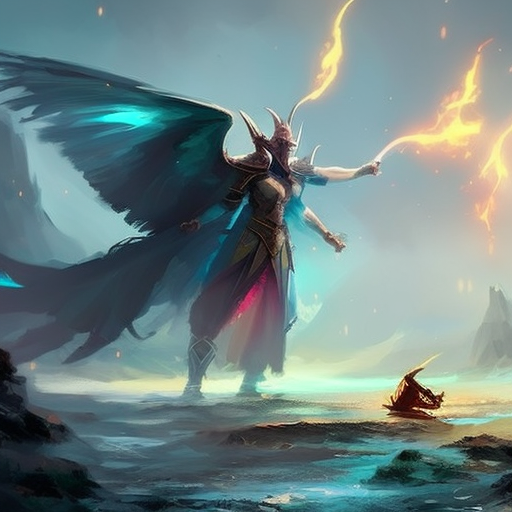Summary:
Norse Mythology by Neil Gaiman is a captivating retelling of the ancient Norse myths, featuring gods, giants, and other fantastical creatures. Gaiman brings these timeless tales to life, weaving together stories of creation, love, betrayal, and epic battles. With his signature storytelling style, Gaiman transports readers to a world filled with gods like Odin, Thor, and Loki, as well as powerful beings like the frost giants and the fire giants. Through these myths, Gaiman explores the complex nature of the gods and their interactions with mortals, offering a fascinating glimpse into Norse culture and beliefs.
The Creation of the World and the Gods
The book begins with the creation of the world, known as the Nine Worlds, and the birth of the gods. Gaiman introduces the reader to Yggdrasil, the World Tree, which connects the different realms. From the primordial void, the first beings emerge: Ymir, the frost giant, and Audhumla, the cosmic cow. As the story unfolds, Odin, the All-Father, and his brothers Vili and Ve, slay Ymir and use his body to create the world. They also create the first humans, Ask and Embla, from driftwood.
The Adventures of the Gods
Gaiman takes readers on a journey through the adventures of the gods, showcasing their strengths, weaknesses, and complex relationships. We witness Thor’s battles against giants and his iconic hammer, Mjölnir. We see Loki’s mischievous nature and his role in both helping and betraying the gods. We also learn about Odin’s wisdom and sacrifice, as he seeks knowledge and power. These stories highlight the gods’ flaws and vulnerabilities, making them relatable and human-like despite their divine status.
The Twilight of the Gods
The book culminates in the prophesied Ragnarok, the final battle between the gods and their enemies. Gaiman vividly describes the chaos and destruction that ensue as the gods face their ultimate challenge. The fate of the world hangs in the balance as the gods fight against the giants, monsters, and even each other. The outcome of Ragnarok brings both tragedy and hope, as the cycle of creation and destruction continues.
Key Takeaways:
- The Norse myths are rich in symbolism and explore universal themes such as creation, love, betrayal, and the cyclical nature of life.
- The gods in Norse mythology are complex characters with both strengths and flaws, making them relatable and human-like.
- The stories of the gods’ adventures and battles against giants and monsters showcase bravery, cunning, and the consequences of their actions.
- Ragnarok, the final battle, represents the inevitable cycle of destruction and renewal in the Norse cosmos.
“We are all stories in the end, just make it a good one.” – Neil Gaiman
In Norse Mythology, Neil Gaiman masterfully retells the ancient Norse myths, bringing them to life for a modern audience. Through his captivating storytelling, readers are transported to a world of gods, giants, and epic battles. The book not only entertains but also provides insights into Norse culture and beliefs. Gaiman’s exploration of the gods’ complex nature and their interactions with mortals offers a deeper understanding of human nature and the universal themes found in mythology. Norse Mythology is a must-read for anyone interested in mythology, folklore, or simply a good story.












